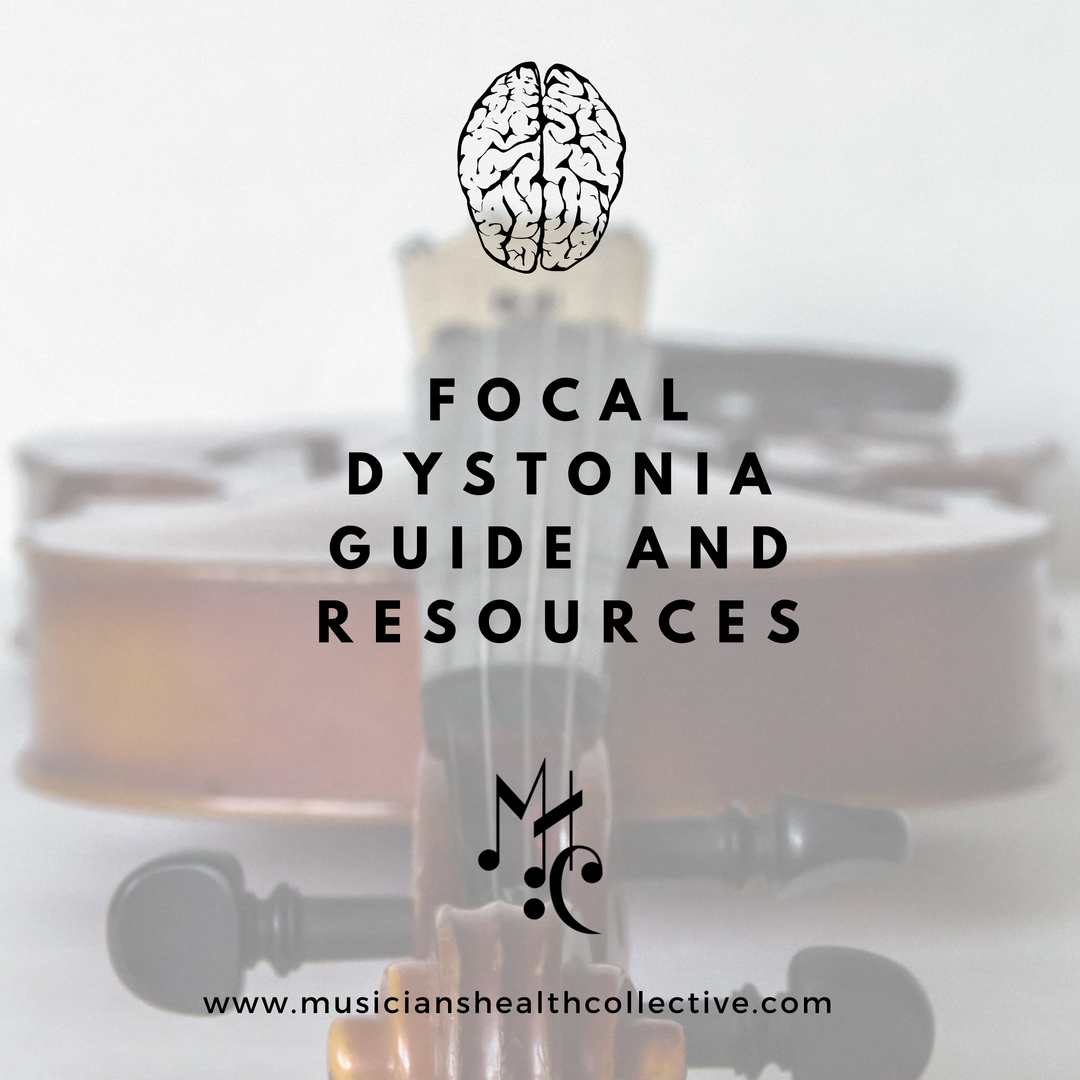Resources and Support for Focal Dystonia
Thanks to everyone who has emailed or commented on Jenn Burns' blog, "Focal Dystonia: A Violist's Perspective." I wanted to just provide some additional resources, answer some general questions, and provide some additional information about what focal dystonia is, how it affects musicians, and where to seek support.
What is dystonia?: "Dystonia is a disorder characterized by involuntary muscle contractions that cause slow repetitive movements or abnormal postures. The movements may be painful, and some individuals with dystonia may have a tremor or other neurologic features." from the National Institute of Neurologic Disorders.
What causes dystonia?: In general, no one knows, and the disease is often classified as idiopathic. "Researchers believe that dystonia results from an abnormality in or damage to the basal ganglia or other brain regions that control movement. There may be abnormalities in the brain’s ability to process a group of chemicals called neurotransmitters that help cells in the brain communicate with each other. There also may be abnormalities in the way the brain processes information and generates commands to move."- from the National Institute of Neurologic Disorders. We don't know why certain musicians develop dystonia, whereas others do not, or why it is more prevalent in adult musicians.
What is focal dystonia?: It's when the symptoms of dystonia are isolated to one area of the body. Dystonia can be global, in one or two areas, or in adjacent areas. Task related dystonia, or in our cause, Musicians' Dystonia, can affect the areas involved in music making, including the embouchure, the hands and arms, or mouth and lips of singers. No one knows why some people are prone to this more than others.
Signs of Dystonia by neurologist Dr. Steven Frucht (edited from Janet Horvath's Playing Less Hurt):
1. Small lapses in the usually instinctive ability to perform on your instrument.
2. Over the course of months, the performance problems become wrose.
3. Neither decreasing practice nor taking time off helps.
4. There is limited pain.
5. Pianists often have symptoms in the right hand, string players in the left, woodwinds in the embouchure or hands, and brass players in the mouth and jaw.
6. Playing your instrument triggers the muscle spasms, and few other activities do (i.e., dystonia is task specfic).
7. Massage, acupuncture, and muscle based treatments do not usually provide relief since dystonia is a neurological disorder.
For musicians, dystonia arises mostly in adult professionals, with more cases in men than women.
Why is dystonia treated with botox shots? The most common treatment is botox (Botulinum) injections into the affected areas. "First used to treat blepharospasm, such injections are now widely used for treating other focal dystonias. The toxin decreases muscle spasms by blocking release of the neurotransmitter acetylcholine, which normally causes muscles to contract." from National Institute of Neurologic Disorders. On the flip side, there are, as always, risks and side effects, including vision issues, muscle weakness, difficulties swallowing, and the symptoms of the food poisoning disease of botulism. The shots are usually restricted to the localized area of dystonia.
Have people recovered from focal dystonia? Yes-most people know the recovery story of Leon Fleischer, pianist. Joanna Falk, flutist, is featured in Janet Horvath's book, "Playing Less Hurt," as a case of recovery from FD, and David Leisner, guitarist has also recovered. I have read of wind players coming back from embouchure specific dystonia, but I know it is a challenge.
Here are some more resources:
NY Times: A Disorder that Stops the Music
Musician's Focal Dystonia: Support, Advice, Rehabilitation




